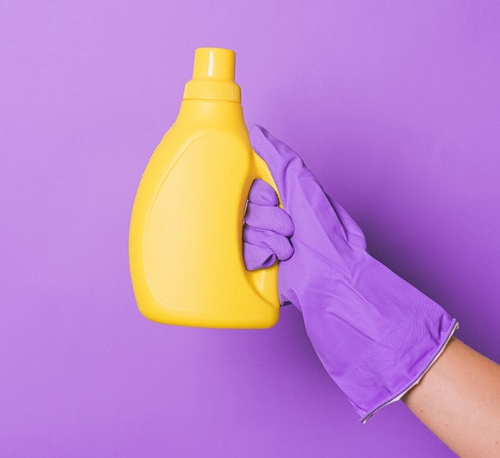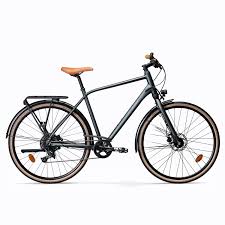
Removing rust from a bike chain may seem like a demanding and laborious task. Surprisingly, there are a few methods, such as de-greasing and scrubbing the chain with a special brush that will make it easy to restore your bike chain to its former glory.
As a bike rider, keeping the bike chain in good conditions is a top priority. To accomplish this, I give it a polish or lubricate it every once in a while. However, after weeks of chemical buildup, a bit of rust will start to form on the chain without me even noticing. After some, time it´ll become very apparent that my chain is rusty. Before I throw it into the trash can, I´ll try removing the rust. It can help return my bike chain to its normal status for a significantly lower cost than buying a new one.
In this article, we´ll take a look at the necessary steps to remove rust from a bike chain, so that you can get back to riding as soon as possible.
Table of Contents
Cleaning a rusty bike chain entirely depends on how much rust it has. It won't be the same for every chain. It could have light rust or the entire chain could be in really bad shape.

Before you actually begin to remove the rust, here are some important steps you should follow:
In order to work on the chain, you'll most likely have to remove it. To make it as comfortable as possible, try placing the bike upside down or hanging it to a bike rack on the wall. Take a look at your surroundings and verify that you have enough space to comfortably work.
If your bike has a paint job, you might want to post something between your bike and the floor to avoid any scratches or damage of any kind.
You could also try placing the bike in a sideways position to have the best access to the chain. However, mind your surroundings as other parts of the bike, such as the pedals, could get damaged.
This is an important step, mainly because it will let you know if your bicycle chain is beyond repair or if you can easily clean it. While checking the chain, look for any type of hole, bump, chip, warping, general imperfection or any sign that the chain looks deteriorated. The best option would be to buy a new chain at the local bike shop, instead of going through the motions.
Another tip that could tell you about the state of the chain is its length. As a chain gets older and used, the rollers and rivets that hold the chain together might begin to loosen. So comparing a bike chain of the same model might prove itself to be a great indicator of your chain´s state.
Master links are pieces within the chain that make it easier to open and remove the chain. They are normally quite different from other links, so you´ll know where it is. However, not all bikes have a master link. So, only do this if possible. If your bike doesn't have one of these, you could always try adding a chain. Or, you can go to your local bike shop and get a master link added to your chain.
Finding the master link should be quite easy, as it should be clearly distinguished from all the rest. Finding the master link will help you remove the bike chain to clean it.
Before removing the bike chain, take note of where the chain is in the bike train. Later on, you can easily reassemble it. You can do this by taking a couple of pictures or by remembering.
In a bike with multiple gears, the bike train refers to the system where the rear cogs are aligned. As there are many rear cogs, but at the current moment your chain is aligned with only one of them, it´s important to take note of where it is so as not to damage the whole system.
If your bike has multiple gears, always move it towards the gear where you can reassemble it without too much trouble. This would be the smallest cog.
Here are some of the things you´ll need to get before removing rust from your bike chain:

To clean your bike chain as thoroughly as possible, it is recommended that you remove the chain. You should especially remove the chain if it has severe rust.
You could try placing some degreaser in a cloth, to make sure it has enough to make the chain wet and really soften the rust so you can easily clean. A chain with lots of buildup might need some extra scrubbing.
You can find some good degreasers for a low price in your local bike store. You can also try using dish soap, as it has great grease removing properties.
If cleaning the chain with a piece of cloth wasn't enough and the rust has accumulated, you can try to soak it in a mold with some soap for about 30 minutes. This should help the rust soften as much as possible.
When getting out of the mold, rinse the degreaser with some hot water. As a professional degreaser can be rough on the skin, be sure to wear some gloves while washing.
Once the rust is softened, grab a steel wool, add some lime juice to it, and start scrubbing. The citric acid in the lime juice should also help the rust particles break down. This way, they can be easily removed.
If you´re scrubbing with good pace, after a couple of minutes you should see the surface rust diminish.
Continue to use gloves throughout the rust removal process.
After scrubbing with the steel wool for a while, your chain should look a bit better. If it isn´t, and there are still big pieces of rust and not just surface rust, repeat this process. However, if you didn't manage to do much progress, you should consider replacing your chain with a new one.
After scrubbing, it is important to rinse out the leftover rust and the lemon juice. Once the juice dries, the chain could get sticky. This won't be good for it.
Once your rusty bike chain is clean and dry, begin spraying WD-40 spray (chemical rust remover) directly on top of the rusty surfaces. Give it a few minutes, and then start scrubbing with a wire brush to remove rust.
As the surface rust starts to fall, you can wipe it with a cloth to clear the area. Repeat this process as many times as necessary.
After a few minutes of scrubbing, your bike chain should be completely rust-free.

Once your chain is completely rust-free, you can place it back on the bike. You can begin by placing the drive train in the exact position it was when you removed it. If there´s some additional rust that doesn't let you install the chain correctly, clear it out before placing the chain.
Once the chain is fully in place, you can close the master link. Make sure the chain is entirely within the gears and is properly placed before closing it.
To check that the chain is well-placed and everything is in order, try spinning the pedals a few times. While the wheel is moving, focus your attention on the chain to make sure that no link is sticking out. If everything looks in order, you´re most likely all set.
To make sure the chain works at its best possible level, you can always add some lubricant to the links. This will help the chain move with more agility and avoid extra damage. If you want to do this, you´ll need a specially formulated bike lubricant for the job. You can find it in bike shops.
After this, you´re all set, you can now go and enjoy your fully restored bike.
The bike chain is an essential part of the bike. Without it, your bicycle won't be able to move. When you pedal, you're moving a gear along with the pedals. This gear is where the bike chain is located. The bicycle chain connects this previously mentioned gear with more gears in the rear wheel, which in turn help move the tire. As the chain comes and goes, the wheel will start moving in a forward direction.
Standard bike chains are made of a series of chain links held together. In some bikes, there is a master link which can help open and close the chain. It is clearly discernible from the other types. Nevertheless, not every bike has a chain with said link, which makes them rather complicated to deal with. You can go to a bike shop to add a master link to your chain.
Between each chain link, there's a lot of space. If you enjoy riding on mountainous terrain or on rainy days, material from the environment like dirt, carbon or salt will begin to collect between the links and on the surface of the chain. For the first few months, it should be fairly easy to miss. However, as soon as you can spot it, try to remove it. Failing to do so could further damage the chain.
Surface rust could also collect due to neglect, as iron oxide will begin to form in places with high humidity and oxygen. So if you have an old bike lying around somewhere, the odds of rust forming is high.
It is also safe to say that after some time, rust can severely affect the integrity of the metal. If the exposure to rust has been prolonged, it is possible that your bike chain may not be salvageable anymore. So if you want to remove rust from your bike chain, the best time to act should be as soon as you see it.

If your bike chain is beyond repair, you´ll have to get a new one. You can usually find them in bike shops or order online. If you´re getting a new chain, make sure that it has a master link, so you can easily remove and reinstall it.
Finally, the average cost of a new bike chain is around $20-$40.
It is important to regularly clean your bike chain. With every kilometer you go, some chemical residue begins to build up. That's why some cyclists clean and reapply lubricant to their bicycle chain approximately once a month or every 350 kms.
Always try to get a chain with a master link, as they're very easy to handle. You can find one for about $15 in any bike shop.
If your chain doesn´t have a master link, you can ask a specialist to add one.
A rusty bike chain may look terrible. However, if you remove rust from bike chains, they might work again. So don't be too keen to throw a perfect chain away. Instead, keep an eye out for sign of deformities, in which case you´ll have to get a new bike chain.
You can keep the rust remover equipment till the next time your bike chain gathers some rust, or you can use it for other purposes.
Baking soda might come in handy to remove rust. It is sometimes used to chemically neutralize the oxidation process.
Removing rust from your bike might be a great way to restore your bike chain. Admittedly, removing the rust does require a few materials and it can be a long and tedious process, but it is worth it.
Removing rust from your bike chain requires no expertise. You only need a few household materials and a strong arm. It is a cheaper alternative to getting a new bike chain. This way, you´ll help your wallet, your bike, and the environment.
